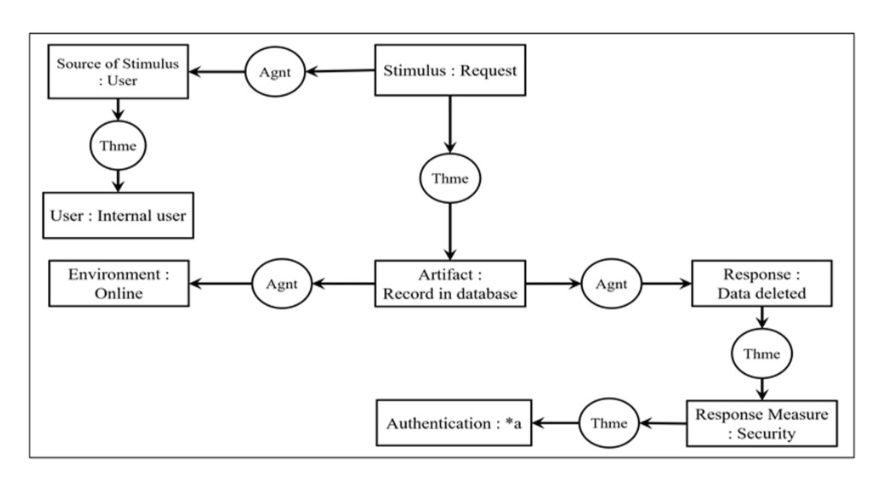Automatic Conflict Detection in Non-Functional Requirement Analysis using a Conceptual Graph
Main Article Content
Abstract
Non-functional requirement (NFR) is a complex problem. The conict of NFRs is a significant obstacle in the requirement analysis phase of software engineering because they can frequently contradict or interfere with other NFRs. Another aspect of the problem derives from the main character of NFRs, since many of them can be related to the same quality attribute. Our research has the objective of representing the NFR by introducing an automatic knowledge representation detection method using conceptual graphs to discover conicts among NFRs. It consists of extracting the NFR from the input software requirement specification document using NFR XML frame and then trying to detect any disputes between it and other NFRs. A billing system case study from a telecommunications company in Thailand yielded 353 NFR XML frames that could be extracted from the software specification document. These divide into Valid frames from complete NFRs, Incomplete NFR frames, and Invalid NFR frames. The accuracy of the extracting process resulted in a precision of 0.36, a recall of 0.92, and an F measure of 0.52. Moreover, these NFR XML frames revealed representative NFR conicts for 20 NFRs; and detected two NFRs as an NFR conict, and reported two NFRs as a potential NFR conict, otherwise known as a bad smell NFR to the system analyst for revising these concerns before submitting them the next development phase.
Article Details

This work is licensed under a Creative Commons Attribution-NonCommercial-NoDerivatives 4.0 International License.
References
Z. Jin, “Requirements engineering methodologies,” Environment modeling-based requirements engineering for software intensive systems, Morgan Kaufmann, 2018, ch. 2.
M. Glinz., “On Non-functional requirements,” 15th IEEE International Requirements Engineering Conference, pp. 21-26, 2007.
“IEEE Recommended Practice for Software Requirements Specifications,” in IEEE Std 830-1998, pp.1-40, 1998.
Chung L., do Prado Leite J.C.S., “On Non-functional requirements in Software Engineering,” In: Borgida A.T., Chaudhri V.K., Giorgini P., Yu E.S. (eds) Conceptual Modeling: Foundations and Applications, Lecture Notes in Computer Science, Springer, Berlin, Heidelberg. Germany, Vol. 5600, 2009.
J. Mylopoulos, L. Chung and B. Nixon, “Representing and using Non-functional requirements: a process-oriented approach,” IEEE Transactions on Software Engineering, Vol. 18(6), pp. 483-497, 1992.
X. Franch, L. López, C. Cares, and D. Colomer, “The i* Framework for Goal-Oriented Modeling,” In: Karagiannis D., Mayr H., Mylopoulos J. (eds) Domain-Specific Conceptual Modeling, Springer, Cham. Switzerland, 2016.
T. H. Al Balushi, P. R. F. Sampaio, D. Dabhi, and P. Loucopoulos, “ElicitO: A Quality Ontology-Guided NFR Elicitation Tool,” In: P. Sawyer, B. Paech, P. Heymans, (eds) Requirements Engineering: Foundation for Software Quality. REFSQ 2007. Lecture Notes in Computer Science, Springer, Berlin, Heidelberg. Germany, Vol. 4542, 2007.
D. V. Dzun and A. Ohnishi, “Improvement of Quality of Software Requirements with Requirements Ontology,” Proceedings of the Ninth International Conference on Quality Software. pp. 284-289, 2009.
I. Castillo, F. Losavio, A. Matteo, and J. Boegh, “REquirements, aspects and software quality: The REASQ model,” Journal of Object Technology, Vol. 9, pp. 69-91, 2010.
Y. Matsumoto, S. Shirai, and A. Ohnishi, “A Method for Verifying Non-functional requirements,” Procedia Computer Science. Vol. 112, pp. 157-166, 2017.
A. Kayed, N. Hirzalla, A. A. Samhan and M. Alfayoumi, "Towards an Ontology for Software Product Quality Attributes," 2009 Fourth International Conference on Internet and Web Applications and Services, pp. 200-204, 2009.
R. Vlas and W. N. Robinson, "A Rule-Based Natural Language Technique for Requirements Discovery and Classification in Open-Source Software Development Projects," 2011 44th Hawaii International Conference on System Sciences, pp. 1-10, 2011.
V. S. Sharma, R. R. Ramnani, and S. Sengupta, “A framework for identifying and analyzing Non-functional requirements from text,” The 4th International Workshop on Twin Peaks of Requirements and Architecture (TwinPeaks 2014). Association for Computing Machinery, New York, NY, USA, pp. 1–8, 2014.
D. Mairiza, D. Zowghi, , & N. Nurmuliani, “Managing conflicts among Non-functional requirements,” 12th Australian Workshop on Requirements Engineering, pp. 11 – 19, 2009.
J. F. Sowa, Conceptual Structures Information Processing in Mind and Machine, Addison-Wesley Publishing company, Inc. Boston, United States, 1984.
F. van Harmelen, V. Lifschitz, and B. Porter, Handbook of Knowledge Representation, Elsevier Science. San Diego, United States, 2007.
J. F. Sowa, “Conceptual Graphs for a Data Base Interface,” IBM Journal of Research and Development, Vol. 20(4), pp. 336-357, 1976.
J. Zhong, H. Zhu, J. Li, and Y. Yu, “Conceptual graph matching for semantic search,” Proceedings of the 10th International Conference on Conceptual Structures: Integration and Interfaces. pp. 92–196, 2002.
L.W. Harper and H.S. Delugach, “Using conceptual graphs to capture semantics of agent communication,” Conceptual Structures for Knowledge Creation and Communication, 11th International Conference on Conceptual Structures, pp. 393-404, 2003
R. Dieng-Kuntz and O. Corby, “Conceptual graphs for semantic web applications,” Conceptual Structures: Common Semantics for Sharing Knowledge, 13th International Conference on Conceptual Structures, pp. 19–50, 2005.
L. Bass, M. Klein, & F. Bachmann, Quality attribute design primitives and the attribute driven design method. In (Vol. 2290, p. 323-328). 2002.
L. Bass, P. Clements and R. Kazman, Software Architecture in Practice (3th. ed.), Addison-Wesley Publishing company, Inc., Boston, United States, 2012.
S. Blackburn, The oxford dictionary of philosophy (2nd ed.).Oxford University PressPrint Publication. 2008.

